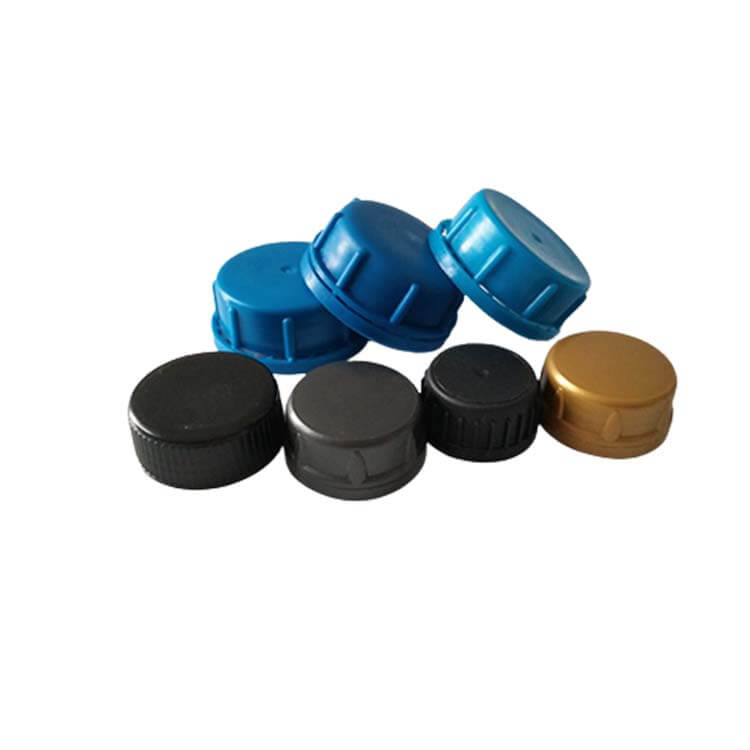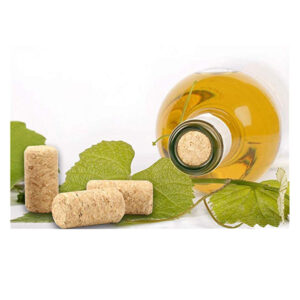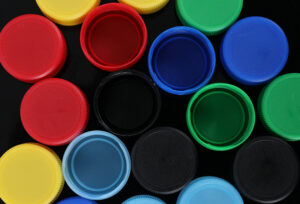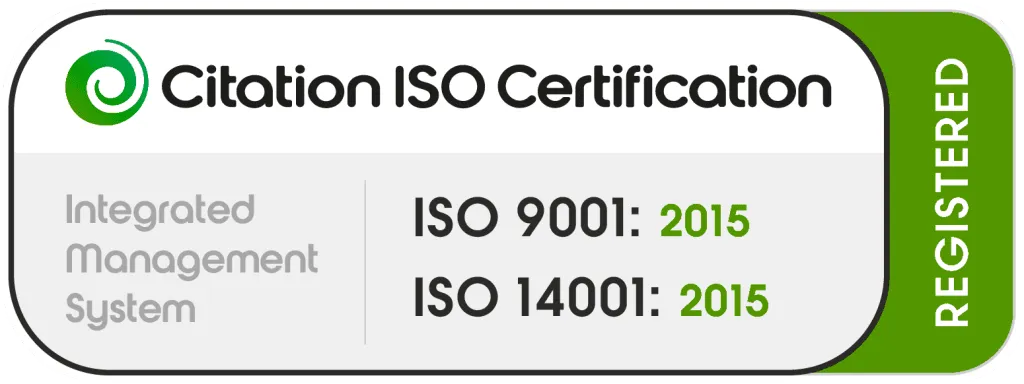Introduction: The Significance of Plastic Bottle Caps in Product Lines
Plastic bottle caps are often the unsung heroes of packaging, playing a pivotal role in various aspects of a product’s success. They have a direct impact on product quality by preserving contents, influence brand image through their design, and significantly affect consumer satisfaction with their usability. Over the years, plastic bottle caps have evolved from simple, functional components to highly customized solutions that cater to specific product needs and brand identities.

The core focus here is mastering the art of aligning design and function in plastic bottle caps to elevate your product line. A well-designed cap that fulfills its functional requirements can be a game-changer for your business. Discover how tailored plastic bottle caps can enhance your products’ appeal and drive more sales – read on to learn more.
1. Understanding the Fundamental Functions of Plastic Bottle Caps
Sealing Performance
One of the primary functions of plastic bottle caps is to provide an effective seal. This seal prevents leakage, which is crucial during transportation and storage, maintains the freshness of the product, and protects the contents against external contaminants such as dust, dirt, and bacteria.
There are various sealing mechanisms available, each with its own applications. Screw-on caps are widely used due to their reliable sealing and ease of use, making them suitable for a range of products from beverages to cleaning agents. Press-on caps offer quick and convenient sealing, often used for products that are opened and closed frequently, like some food items. Snap-on caps provide a secure fit with a satisfying snap, commonly found on bottles for personal care products.
Choosing the right seal depends on the nature of the product. For liquid products, a tight and leak-proof seal is essential, making screw-on or snap-on caps ideal. Solid or powder products may require a cap that allows for easy access while still providing adequate protection, where press-on caps could be a good choice.
Preservation Ability
Plastic bottle caps also play a vital role in extending the shelf life of products by blocking oxygen, moisture, and light. Oxygen can cause oxidation, leading to spoilage in food and beverage products, as well as degradation in cosmetics and pharmaceuticals. Moisture can affect the texture and consistency of many products, while light, especially ultraviolet light, can break down certain ingredients.
Specialized caps are designed for specific products. For perishable goods like fresh juices and dairy products, caps with enhanced oxygen barrier properties are necessary. Cosmetics often require caps that protect against moisture and light to maintain the integrity of the formulas. Pharmaceuticals need caps that ensure the stability of the medications, preventing degradation from external factors.
User-Friendliness
A plastic bottle cap should be easy to open and close for consumers of all ages and abilities. This includes elderly individuals and those with limited hand strength. Child-resistant caps are a critical feature for safety-critical products such as cleaning agents, pesticides, and medications. These caps are designed to be difficult for young children to open, reducing the risk of accidental ingestion or exposure.
Tamper-evident features are another aspect of user-friendliness, as they build consumer trust. These features, such as a breakable ring or a seal that must be removed before opening, indicate if the product has been tampered with, giving consumers confidence in the product’s safety and integrity.
2. Key Design Elements of Custom Plastic Bottle Caps
Branding Integration
Custom plastic bottle caps offer excellent opportunities for branding integration. Logos, colors, and textures can be incorporated into the cap design to reflect your brand identity. Embossing and debossing are effective techniques for adding logos or brand names, creating a tactile and visual element that stands out. Printing options, such as pad printing or digital printing, allow for detailed designs and vibrant colors.
Color matching is essential to ensure that the cap aligns with your product’s overall packaging design. Consistency in color across all packaging components helps to reinforce brand recognition and create a cohesive look on store shelves.
Shape and Size
The shape and size of a plastic bottle cap should complement the bottle’s design while ensuring practicality. Ergonomic designs are crucial for comfortable handling, making it easy for consumers to grip and twist the cap. Unique shapes can help your product stand out on store shelves, attracting the attention of potential customers.
The size of the cap must be proportionate to the bottle, ensuring a proper fit and functional use. For example, a large bottle of laundry detergent may require a larger cap for easy pouring, while a small bottle of perfume would have a smaller, more 精致的 cap.
Material Selection
Choosing the right plastic material for your bottle cap is based on the specific needs of the product. Polypropylene (PP) is a popular choice due to its durability, chemical resistance, and versatility, making it suitable for a wide range of products including food, cosmetics, and household cleaners. Polyethylene (PE) is flexible and offers good impact resistance, often used for squeeze bottles and caps that require a soft touch. Polyethylene terephthalate (PET) is known for its clarity and strength, making it ideal for caps on beverage bottles where visibility is important.
For edible products, food-grade materials are a must to ensure safety. Chemical-resistant materials are necessary for cleaning agents and cosmetics that contain harsh ingredients, preventing the cap from deteriorating over time.
3. Matching Plastic Bottle Caps to Specific Product Categories
Food and Beverage Industry
In the food and beverage industry, plastic bottle caps need to focus on freshness preservation and easy pouring. For water and juice bottles, caps with a tight seal to prevent leakage and maintain carbonation (in the case of carbonated drinks) are essential. Sauce and condiment bottles often require caps with pour spouts or flip-top lids for controlled dispensing.
Tamper-proof features are crucial for food safety, giving consumers peace of mind that the product has not been contaminated. Caps may also be designed to be reclosable, allowing consumers to store the remaining product easily.
Cosmetics and Personal Care
Cosmetics and personal care products demand elegant cap designs that convey luxury and quality. Shampoo and lotion bottles often feature pump caps for easy dispensing, allowing users to control the amount of product they use. Serum bottles may have dropper caps for precise application, while perfume bottles have caps that add to the overall aesthetic appeal, often with decorative elements.
The design of the cap should align with the brand’s image, whether it’s a high-end luxury brand or a more affordable, everyday line. Materials and finishes, such as matte or glossy, can also contribute to the perception of quality.
Household and Cleaning Products
Household and cleaning products require durable plastic bottle caps that can resist chemical corrosion. Detergents, cleaners, and disinfectants often contain strong chemicals that can damage certain materials, so the cap must be made from a resistant plastic.
Child-resistant designs are a must for these products to prevent accidental exposure, especially in homes with children. The caps should also be easy for adults to open but difficult for young kids, striking a balance between safety and usability.
Pharmaceuticals and Healthcare
In the pharmaceutical and healthcare industry, plastic bottle caps must meet strict regulations and standards. Medicine bottles often have caps with precise dosage control features, such as measuring cups or droppers, to ensure accurate administration.
Compliance with industry regulations is non-negotiable, ensuring the safety and efficacy of the products. Tamper-evident features are also essential to protect the integrity of medications.
4. The Benefits of Custom Plastic Bottle Caps for Your Business
Brand Differentiation
In a competitive market, unique cap designs can help your product stand out from the crowd. Custom plastic bottle caps allow you to incorporate your brand’s unique elements, making it easier for consumers to recognize and remember your product. This differentiation can lead to increased brand loyalty and market share.
Improved Customer Experience
A well-designed, functional cap enhances the overall customer experience. Easy opening and closing, convenient dispensing, and secure sealing all contribute to customer satisfaction. When consumers have a positive experience with your product’s packaging, they are more likely to repurchase and recommend your product to others.
Cost-Effectiveness
Tailored plastic bottle caps can reduce waste and improve production efficiency. By designing caps that fit perfectly with your bottles, you minimize the risk of leakage and product spoilage. Additionally, custom caps can be designed to streamline the packaging process, reducing labor costs and increasing productivity.
Increased Sales
Visually appealing and functional packaging, including custom plastic bottle caps, can attract more customers and drive sales. A unique and well-designed cap can catch the eye of consumers on store shelves, encouraging them to pick up your product and make a purchase. The improved customer experience also leads to repeat sales and positive word-of-mouth, further boosting your sales figures.
Enhanced Product Protection
Custom plastic bottle caps provide enhanced product protection during storage and transportation. A secure seal prevents leakage and contamination, ensuring that your products reach consumers in the best possible condition. This reduces the number of returns and complaints, saving your business time and money.
5. How to Choose a Reliable Plastic Bottle Cap Supplier
Manufacturing Capabilities
When selecting a supplier, it’s important to assess their manufacturing capabilities. They should have the ability to produce custom designs that meet your specific requirements, including unique shapes, sizes, and branding elements. Additionally, they should be able to meet your volume requirements, whether you need a small batch or large-scale production.
Quality Standards
Ensure that the supplier complies with international quality and safety regulations. This includes using high-quality materials, implementing strict quality control processes, and having the necessary certifications. A reliable supplier will be able to provide documentation of their quality standards and certifications, giving you confidence in their products.
Material Sourcing
Verify that the supplier sources high-quality, durable, and appropriate plastics for your bottle caps. They should be able to provide information about the origin and properties of the materials they use. Using the right materials is essential for ensuring the functionality and longevity of the caps.
Design Support
Look for a supplier that offers design assistance to optimize cap functionality and aesthetics. Their design team should work with you to understand your product needs and brand identity, helping to create a cap design that meets both functional and visual requirements. This can save you time and effort in the design process and ensure a better end result.
Lead Times and Flexibility
Evaluate the supplier’s ability to meet deadlines and adapt to changing needs. They should have a clear production schedule and be able to communicate any potential delays. Flexibility is also important, as your requirements may change over time. A supplier that can accommodate changes in order quantities or design specifications is more likely to be a long-term partner.
Pricing and Value
While price is an important factor, it’s essential to consider the overall value and quality offered. Compare costs from different suppliers, but don’t make your decision based solely on price. A slightly higher price may be worth it for better quality, reliable service, and design support.
6. Case Studies: Successful Product Lines with Custom Plastic Bottle Caps
Example 1: A beverage company was struggling to stand out in a crowded market. They decided to introduce ergonomic, branded plastic caps for their line of fruit juices. The new caps were designed with a comfortable grip and featured the company’s logo prominently. Within six months of launching the new caps, the company saw a 25% increase in sales, as consumers were drawn to the unique design and ease of use.
Example 2: A cosmetic brand was receiving complaints about the difficulty of dispensing their lotion products. They worked with a supplier to develop custom pump caps that were easy to use and dispensed the perfect amount of lotion. The new caps also featured the brand’s signature color and logo, enhancing the overall packaging design. Customer satisfaction scores increased significantly, and the brand saw a boost in repeat purchases.
Example 3: A household cleaner manufacturer was experiencing high levels of product waste due to leakage during transportation and storage. They switched to leak-proof plastic caps that were specifically designed for their cleaning products. The new caps provided a secure seal, reducing product waste by 30% and saving the company a significant amount of money.
7. FAQ: Common Questions About Custom Plastic Bottle Caps
What is the minimum order quantity for custom plastic bottle caps?
The minimum order quantity can vary depending on the supplier and the complexity of the design. Some suppliers may have a minimum order of 10,000 pieces, while others may be able to accommodate smaller orders for a higher price per unit. It’s best to discuss your specific needs with the supplier.
How long does it take to produce custom plastic bottle caps?
Production time can range from a few weeks to a few months, depending on factors such as the design complexity, the number of units, and the supplier’s production schedule. It’s important to factor in this lead time when planning your product launch or packaging update.
Can custom plastic caps be recycled?
Many plastic bottle caps are recyclable, but it depends on the type of plastic used. PP and PE caps are generally recyclable, while some other types may not be. It’s important to check with your supplier about the recyclability of the caps and to include this information on your product packaging.
What factors affect the cost of custom plastic bottle caps?
The cost of custom plastic bottle caps is influenced by several factors, including the material used, the design complexity, the number of units ordered, and any additional features such as printing or embossing. Higher-quality materials and more complex designs will typically result in a higher cost per unit.
How do I ensure that the custom caps fit my existing bottles?
To ensure a proper fit, it’s essential to provide the supplier with detailed specifications of your bottles, including the neck size and thread type. Many suppliers will also offer sample caps for testing to ensure that they fit correctly before proceeding with a full order.
Conclusion: Elevate Your Product Line with Custom Plastic Bottle Caps — STDPAK
Matching design and function in plastic bottle caps is crucial for the success of your product line. A well-designed cap not only protects the product and enhances usability but also serves as a powerful branding tool. By investing in custom plastic bottle caps, you can differentiate your brand, improve the customer experience, and drive sales.
Ready to transform your product packaging? Contact us today to discuss your custom plastic bottle cap needs and get a free quote. Let’s work together to create caps that drive sales and delight your customers.






